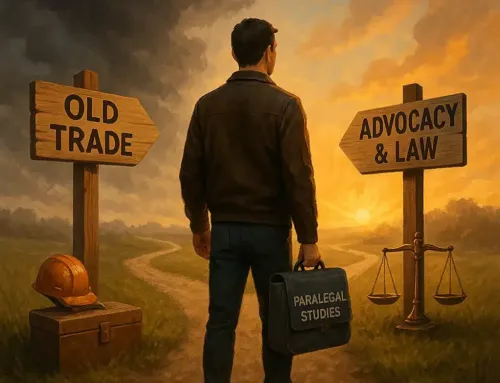
Approx. read time: 6.1 min.
Post: From Ancient Disputes to Modern Challenges: Lessons in Conflict Resolution
From Ancient Disputes to Modern Challenges: Lessons in Conflict Resolution
Introduction
Conflict has been a defining feature of human societies throughout history. From familial disputes in ancient texts to the complex geopolitical struggles of modern times, understanding the principles of conflict resolution remains essential for fostering peace and justice. Jewish traditions, historical narratives, and theological insights provide profound lessons that resonate with both ancient wisdom and contemporary challenges. This documentary article explores these themes, delving into the intricacies of Jewish law, the dynamics of modern geopolitics, and the enduring quest for justice.
Ancient Roots of Conflict and Resolution
Patriarchal Narratives: Lessons in Mediation
The Torah recounts the lives of the patriarchs as microcosms of broader societal conflicts. For instance, Jacob’s encounter with Esau after years of estrangement provides a blueprint for resolving deeply entrenched familial disputes. The meeting, laden with tension and potential violence, culminates in a moment of reconciliation. Jacob’s preparation—offering gifts, humbling himself, and praying for guidance—highlights the necessity of multifaceted approaches to conflict resolution: strategic planning, humility, and spiritual reflection.
Similarly, Abraham’s negotiation with the divine over Sodom and Gomorrah exemplifies the role of advocacy and moral reasoning. Abraham’s persistent plea to spare the righteous within the cities underscores the importance of ensuring justice even amid overwhelming circumstances. These stories emphasize the need for compassion, strategic thinking, and justice in resolving disputes, whether personal or communal.
The Role of Jewish Law in Conflict Resolution
The Talmudic Tradition: Balancing Ethics and Legal Precision
The Talmud, the cornerstone of Jewish jurisprudence, provides a dynamic framework for addressing conflicts. Unlike rigid legal systems, Talmudic law evolves through rigorous debate and interpretation. The concept of “Sanhedrin common law” illustrates this adaptability, allowing for justice that reflects societal changes while remaining rooted in Torah principles.
For example, the Talmud’s discussions on compensation for damages—whether physical, emotional, or financial—demonstrate the emphasis on fairness. Judges were expected not only to rule on legal technicalities but also to consider the broader implications of their decisions on communal harmony.
The Talmudic tradition also distinguishes between “positive” and “negative” commandments as precedents for addressing disputes. By examining these categories, judges can discern the appropriate course of action while maintaining ethical integrity. This methodology contrasts sharply with the rigidity of codified laws, such as those in the Shulchan Aruch, which some critics argue reflect the static realities of ghettoized Jewish communities in medieval Europe.
Modern Geopolitical Conflicts: The Case of Israel and the United Nations
Historical Context
The establishment of the State of Israel in 1948 marked a pivotal moment in Jewish history, fulfilling a millennia-old aspiration for self-determination. However, the geopolitical realities that followed have been fraught with challenges. The United Nations, originally envisioned as a beacon of international cooperation, has often been accused of harboring biases against Israel.
For example, the UN’s repeated labeling of territories acquired in defensive wars as “occupied” disregards historical precedents, such as the post-World War II partitioning of Prussia. Israel’s assertion that its borders are determined by military outcomes and subsequent negotiations, rather than external impositions, aligns with historical norms yet remains contested by international bodies.
The Balfour Declaration and Beyond
The Balfour Declaration of 1917 and the subsequent League of Nations mandate recognized the Jewish right to self-determination in their ancestral homeland. Yet, the rejection of UN Resolution 181 by Arab states in 1947 set the stage for perpetual conflict. Israel’s victories in subsequent wars, including the Six-Day War of 1967, further solidified its territorial claims. However, the UN’s insistence on terms like “occupied territories” perpetuates a narrative that undermines Israel’s legitimacy.
Prophetic Mussar: Ethical Foundations of Justice
Defining Prophetic Mussar
The prophetic literature of the T’NaCH (Hebrew Bible) offers timeless insights into justice and morality. Prophets like Isaiah and Amos emphasized that true piety lies in ethical conduct rather than ritual observance. Their call for “justice, justice shall you pursue” resonates as a central tenet of Jewish faith.
Mussar and Modern Ethics
Traditional Judaism argues that ethics devoid of prophetic mussar are inherently flawed. The distinction between tohor (pure) and tuma (impure) reflects a deeper understanding of human behavior and its impact on societal harmony. This framework challenges contemporary movements, such as Humanistic Judaism, which prioritize cultural and historical aspects over spiritual and ethical imperatives.
For example, Humanistic Judaism’s emphasis on secular values often disregards the holistic view of ethics presented in prophetic mussar. The prophetic vision, rooted in the pursuit of justice, serves as a counterpoint to the fragmented ethical paradigms of modernity.
The Interplay of Ritual and Justice
The Shemone Esrei: A Blueprint for Ethical Living
The Shemone Esrei, the central prayer of Jewish liturgy, encapsulates the synthesis of ritual and ethical imperatives. Comprising three introductory blessings, thirteen middle petitions, and three concluding blessings, it mirrors the structure of the 613 commandments. Each blessing aligns with specific tohor middot (attributes) revealed at Horev, emphasizing the interconnectedness of divine guidance and human responsibility.
For instance:
- The first three blessings invoke the merits of the patriarchs, symbolizing foundational principles of faith.
- The thirteen middle blessings address communal needs, from justice to healing, reflecting the societal dimensions of mitzvot.
- The concluding blessings affirm hope and gratitude, reinforcing the cyclical nature of spiritual renewal.
Conflict Resolution in Practice: Lessons from History
The Camp David Accords
The 1978 Camp David Accords between Israel and Egypt exemplify the principles of direct negotiation and mutual recognition. Unlike the UN’s top-down approach, the accords were achieved through face-to-face dialogue between leaders, emphasizing the importance of understanding and compromise.
The Abraham Accords
Similarly, the 2020 Abraham Accords highlighted the potential for regional cooperation. By normalizing relations with the UAE and Bahrain, Israel demonstrated that shared economic and security interests could transcend historical animosities. These agreements underscore the efficacy of direct engagement over imposed resolutions.
The Challenges of Assimilation
Humanistic Judaism and Secular Ethics
Movements like Humanistic Judaism often prioritize cultural continuity over spiritual depth. While celebrating Jewish history and traditions, they frequently reject the theological and ethical frameworks that underpin traditional Judaism. This approach risks diluting the profound insights of Torah and Talmud, reducing them to mere historical artifacts.
The Role of Education
To counter the challenges of assimilation, Jewish education must emphasize the relevance of Torah principles in addressing contemporary issues. By integrating prophetic mussar with modern ethical dilemmas, educators can inspire a renewed commitment to justice and communal responsibility.
Conclusion
The journey from ancient patriarchal narratives to modern geopolitical struggles reveals the enduring relevance of Jewish principles in conflict resolution. Whether through the pursuit of justice, the synthesis of ritual and ethics, or the emphasis on direct negotiation, Jewish tradition offers profound insights for navigating the complexities of human interaction. As the world grapples with escalating conflicts, these timeless lessons serve as a beacon of hope and a call to action.
Cited Source: https://conflictresolutions.home.blog/
Related Videos:
Related Posts:
Understanding the Israel-Gaza Conflict: Involvement of Iran, Lebanon, and Militant Groups
Uncovering Syria’s Ancient Jewish Legacy: From Biblical Times to Modern-Day Rescues
Global Geopolitical Tensions and Economic Shifts in the Post-Pandemic World
Magna Probe, Auto Parts Antitrust & Justice Crackdown
Donald Trump’s ‘God Bless the USA’ Bible: A Strategic Blend of Patriotism and Commerce









